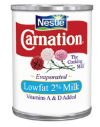Macaroni and Tomato
“It’s so simple. Just cook some macaroni and pour in some tomatoes.”
Mama’s verbal instructions were simple. But there were so many variations.
Method 1: Combine cooked macaroni noodles with a jar of home-canned tomatoes. Talk to your little girl about when we all drove up to Aunt Char’s farm, and picked and canned them. Sit down at the table to eat with her. Tell her a story, or sing her a song when you’re done.
Method 2: Combine noodles and home-canned tomatoes as above. Call for your daughter to come to the kitchen and eat. She stays so busy now. Be gracious and understanding when she rushes off after eating to go spend time with her friends.
Method 3: Heat up a bowl of the macaroni and tomato you made the previous night in anticipation of your daughter coming home for the weekend. Listen while she tells you everything about college. Smile and keep it to yourself that you know she isn’t telling you everything.
Method 4: Use a store bought can of tomatoes because it has been many years since you could pick and can your own. Hold your new granddaughter in your arms while her mother eats a bowl of the best food in the world.
Method 5: Hold your daughter’s hand while she reminisces with you about how she always loved your macaroni and tomato. Laugh about what a simple thing that was. Smile and squeeze her hand a little tighter when she sheds a tear and tells you it is her favorite food in the world.
photo by the author
- Nena Gravil is a writer and an artist who works a daytime gig as an Information Systems Security Engineer to pay the bills. She shares a home in Nashville with two snakes, two cats, and one dog. Nena has one daughter, one girlfriend, and one best friend, and she understands exactly how fortunate she is. Sometimes she sings way too loudly in the shower and it's ridiculous.











